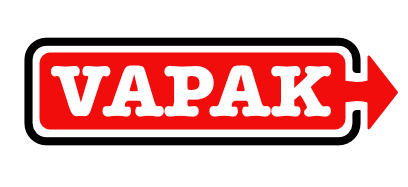FAQ
We have prepared a summary of some of the most frequently asked questions regarding vacuum packaging food at home.
We will be happy to advise you on other questions. Just contact us via one of the communication channels.
What is vacuum food packaging and how does it work?
Vacuum food packaging is a process by which you remove air from a packaging bag or container, which helps extend the freshness of food.
What are the benefits of vacuum food packaging?
Vacuum food packaging has several advantages, such as extending food shelf life, preserving freshness and nutritional value, minimizing odor transfer, and protecting against mold.
At the same time, vacuum packaging allows you to acquire larger quantities of raw materials with less frequent shopping.
Individual vacuum packaging is a great optimization of storage space.
What foods can I pack in vacuum bags?
Most foods can be vacuum-packed, including meat, fish, fruits, vegetables, cheeses, pastries, and soups. It is important to keep in mind that some foods, such as bread or overly soft fruits, should be frozen before packaging to prevent deformation.
Is vacuum packaging safe?
All bags and rolls in our offer are certified for food contact and have a temperature resistance of up to 70 degrees Celsius.
Are the bags suitable for use with Sous-Vide?
All bags and rolls in our offer are suitable for Sous-Vide cooking. Temperature resistance up to 60°C is for 4 hours and up to 70°C for 2 hours.
How long do vacuum-packed foods last?
Food shelf life depends on the specific type of food and storage conditions. In general, vacuum-packed foods last longer than foods packaged in the usual way, with shelf life potentially extending by several weeks or months. (See table).
| Product/Storage Method | Normal Conditions | Vacuum Packed |
|
Room Temperature Storage (+20° / +25° C) |
||
| Bread | 1 - 3 days | 6 - 8 days |
| Dry Biscuits | 120 - 180 days | 360 days |
| Dry Pasta/Rice | 180 days | 360 days |
| Flour | 120 days | 360 days |
|
Refrigerated at +3° / +5° C |
||
| Raw Meat | 2 - 3 days | 6 - 9 days |
| Fresh Fish | 1 - 3 days | 4 - 6 days |
| Salami | 4 - 6 days | 20 - 25 days |
| Hard Cheese | 15 - 20 days | 30 - 60 days |
| Fresh Fruit | 5 - 10 days | 14 - 20 days |
| Cooked Pasta | 2 - 3 days | 6 - 10 days |
| Cooked Meat | 3 - 5 days | 10 - 15 days |
|
Frozen at -18° / -20° C |
||
| Meat | 120 days | 480 days |
| Fish | 90 days | 360 days |
| Fruit and Vegetables | 300 days | 720 days |
Do vacuum-packed foods need to be kept refrigerated/frozen?
Not all foods need to be stored in the refrigerator after vacuum packaging. Some foods, such as dried fruits or canned goods, can be stored at room temperature. However, meat, dairy products, and other foods with a shorter consumption interval should be stored in the refrigerator.
Most vacuum-packed foods can be safely frozen. Vacuum packaging protects food from frost and prevents "freeze-burn." However, ensure that foods are properly packaged and labeled with the freezing date.
What are the most common mistakes when vacuum packaging food?
Some common mistakes when vacuum packaging food include incomplete sealing of the bag, using damaged bags, overfilling bags, or insufficient cleaning of the vacuum machine. These errors can reduce the effectiveness of vacuuming and the shelf life of foods.
We will be happy to assist you with other questions. Just contact us through one of our communication channels.
